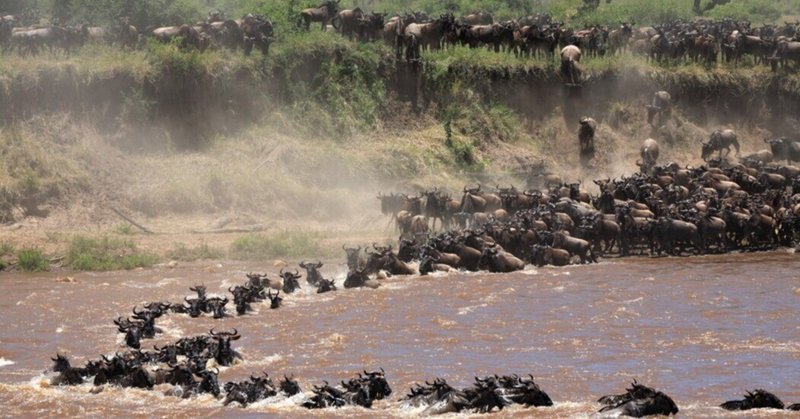
タンザニアの国立公園と保護区:自然と野生動物の楽園
みなさん、こんにちは!
皆さんは、タンザニア連合共和国がどこにあるか?前回学びましたね。一緒にタンザニアの旅を楽しむために事前学習しましょう。
タンザニアには多くの国立公園と野生生物保護区があります。これらの自然保護地域は、野生動物や生態系の保護、観光、研究などの目的で設立されています。以下に、いくつかのタンザニアの国立公園と保護区を紹介します。
セレンゲティ国立公園(Serengeti National Park):
セレンゲティは、アフリカで最も有名な国立公園の一つであり、野生動物の大移動や「大規模なワイルドビースト・ミグレーション」の舞台として知られています。ライオン、シマウマ、キリン、ゾウなど多くの野生動物が生息しており、美しい景観が広がっています。

タランギーレ国立公園(Tarangire National Park):
タランギーレ国立公園は、象の群れで有名で、多くの象がこの地域に生息しています。また、鳥類も豊富であり、野生動物観察に適しています。
ンゴロンゴロ保全地域(Ngorongoro Conservation Area):
ンゴロンゴロは、クレーター(1)として知られる巨大なカルデラ(2)で、独自の生態系を持っています。ここでは多くの野生動物を間近で見ることができ、特にクレーター内は美しい風景と野生動物の宝庫です。
キリマンジャロ国立公園(Kilimanjaro National Park):
キリマンジャロは、アフリカ最高峰の山であり、登山者にとって有名な場所です。国立公園内には山の景観と独自の生態系が広がっています。
ルワハ国立公園(Ruaha National Park):
ルワハは、タンザニアで最大の国立公園で、多くの野生動物が生息しています。セレンゲティとは異なる環境を提供し、サファリ愛好家に人気があります。
これらはタンザニアの国立公園や保護区の一部ですが、全体として国内にはさまざまな野生動物と美しい自然景観が広がっています。タンザニアを訪れる際には、野生動物観察や自然体験を楽しむ機会が豊富にあります。
大使館の協力もあり、今日はタンザニアのンゴロンゴロ保全地域(NCA)についてお話します。ここでは一生忘れられない体験ができる場所で、ンゴロンゴロについて学びましょう。
ンゴロンゴロ保全地域は、世界的に有名な観光地です。1979年にタンザニアで初めて自然遺産として登録されました。そして2010年には、ユネスコの世界遺産リストに自然と文化の複合遺産として追加登録されました。
ここでは、黒いサイを自然環境で確実に見ることができ、また世界で最もライオンが密集して生息する場所としても知られています。ンゴロンゴロクレーター内では、4時間のツアーで象、サイ、ライオン、ヒョウ、スイギュウなどをそのままの自然な環境で見ることができます。こうした保全地域は、世界に一つしかない特別な場所なのです。

ンゴロンゴロの美しい風景をビジュアルで楽しむ準備をしてください!
Tanzania's National Parks and Conservation Areas: A Paradise of Nature and Wildlife
Hello everyone!
Do you remember where the United Republic of Tanzania is located? In our previous lesson, we learned about it. To enjoy our Tanzanian adventure together, let's do some pre-learning about Tanzania's unique places.
Tanzania boasts many national parks and wildlife conservation areas, established for purposes such as wildlife preservation, tourism, and research. Here are a few of Tanzania's national parks and conservation areas:
Serengeti National Park:
Serengeti is one of the most famous national parks in Africa, known for the great wildlife migration and vast savannah landscapes. It's home to lions, zebras, giraffes, and elephants, among many other species.
Tarangire National Park:
Tarangire National Park is renowned for its herds of elephants. It's also a birdwatcher's paradise, with a rich variety of bird species.
Ngorongoro Conservation Area:
Ngorongoro is a massive volcanic caldera known for its unique ecosystem. Here, you can get up close to a wide range of wildlife, making it a treasure trove for nature enthusiasts.
Kilimanjaro National Park:
Kilimanjaro, Africa's highest peak, is a famous destination for trekkers and climbers. The national park offers stunning mountain landscapes and a unique ecosystem.
Ruaha National Park:
Ruaha is Tanzania's largest national park, home to a diverse range of wildlife. It provides a different environment compared to Serengeti and is popular among safari enthusiasts.
These are just some of Tanzania's national parks and conservation areas. Altogether, Tanzania offers a wealth of opportunities for wildlife observation and natural experiences.
With the support of the embassy, today we will talk about the Ngorongoro Conservation Area (NCA) in Tanzania. This is a place where unforgettable experiences await, so let's learn about Ngorongoro.
The Ngorongoro Conservation Area is a globally renowned tourist destination. It was first designated as a natural heritage site in Tanzania in 1979. In 2010, it was further added to UNESCO's World Heritage List as a mixed natural and cultural property.
Here, you can reliably spot black rhinos in their natural environment, and it's also known as the place with the densest lion population in the world. Inside the Ngorongoro Crater, you can witness elephants, rhinos, lions, leopards, and buffaloes in their natural habitat during a 4-hour tour. These conservation areas are truly one-of-a-kind places.
Get ready to visually indulge in the breathtaking landscapes of Ngorongoro!
(1)
クレーター(Crater):
クレーターは、地表にできたくぼみや穴を指します。
クレーターは火山活動によって形成されることもありますが、他の地理的プロセスによっても形成されます。例えば、隕石の衝突によってできるクレーターもあります。
火山活動によって形成されるクレーターは、主に火山の頂上部にできるくぼみで、噴火口としても知られています。火山噴火の際、マグマやガスが噴出することがあります。
カルデラとクレーターは、地球上のさまざまな地形に存在し、科学的研究や観光名所として重要な役割を果たしています。前述のンゴロンゴロ保全地域(Ngorongoro Conservation Area)の例では、ンゴロンゴロクレーターは火山カルデラの一種であり、多くの野生動物と美しい風景が魅力です。
(2)
カルデラ(Caldera):
カルデラは、主に火山活動に関連して形成される大きなくぼみや穴のことを指します。
通常、火山が噴火すると、マグマが地下の貯留室から噴出し、火山の頂上部が崩壊または崩れ落ちることがあります。この結果、巨大なくぼみや穴が形成され、これをカルデラと呼びます。
カルデラは非常に大きく、数キロメートルから数十キロメートルにわたることがあり、その中に湖が存在することもあります。
Crater:
A crater refers to a depression or hole formed on the Earth's surface.
Craters can be formed by volcanic activity, but they can also be created by other geological processes. For example, craters can be formed by the impact of meteorites.
Craters formed by volcanic activity are typically depressions that occur at the summit of a volcano and are also known as volcanic craters. During a volcanic eruption, magma and gases may be expelled from these craters.
Caldera:
A caldera refers to a large depression or hole formed primarily in association with volcanic activity.
Usually, when a volcano erupts, magma erupts from an underground reservoir, and the summit of the volcano may collapse or subside. As a result, a huge depression or hole is formed, and this is called a caldera.
Calderas can be extremely large, ranging from several kilometers to tens of kilometers in diameter, and they may contain lakes within them.
Calderas and craters are found in various geological landscapes on Earth and play significant roles in scientific research and as tourist attractions. As an example, in the case of the Ngorongoro Conservation Area mentioned earlier, the Ngorongoro Crater is a type of volcanic caldera, known for its abundant wildlife and beautiful scenery.
この記事が気に入ったらサポートをしてみませんか?
